Care for currants in the fall and preparation for winter: what to do after harvest
To get a bountiful harvest of currants every year, you need to properly care for the shrub throughout the growing season, including after fruiting.
Below you can find useful information about the peculiarities of caring for berry bushes after harvesting, as well as in autumn and about measures to prepare it for winter.

Content
How to care for currants after fruiting (harvesting): basic activities
When the currants finish their fruiting, and you have collected the entire crop, the bushes will need special care. Indeed, it is at this moment that flower buds will begin to tie on the bush, in other words, the active process of laying the next year's harvest will begin.Therefore, if you want fruitfulness for next year to be abundant, it is necessary to take proper care of the currants after harvest.
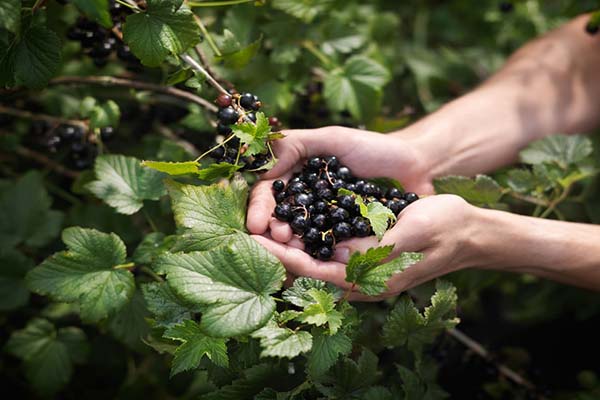
The care of red, white and black currants after fruiting in the second half of summer (July-August) includes the following activities:
- pruning;
- clearing (renewing) the trunk circle and its loosening;
- watering;
- feeding;
- treatment for diseases and pests.
Post-harvest pruning
The first thing to start with is to prune the currant bush.
Advice! You need to cut the shoots completely to ground level, try not to leave hemp.
Which currant branches should be pruned after picking berries:
- all weak (thin), painful (damaged by pests) and broken shoots (including annuals), as well as lying on the ground (sanitary or preventive pruning);
- all old branches that are more than 4-5 years old (rejuvenating pruning);
- branches that grow inside the bush and thicken it. In order for the shrub to bear fruit well and not get sick, it must be well lit and ventilated;
- overgrown annual shoots (their tops), which are perfect as propagation cuttings for shrubs (formative pruning).
Important! Most gardeners recommend after the summer harvest spend only preventive or sanitary pruning shrub, and shaping and rejuvenating in autumn after falling leaves.
Why?
It is better to wait until the leaves turn yellow and fall off, so that the assimilates from the old branches flow into the roots and are used by the bush in winter as reserve nutrients.
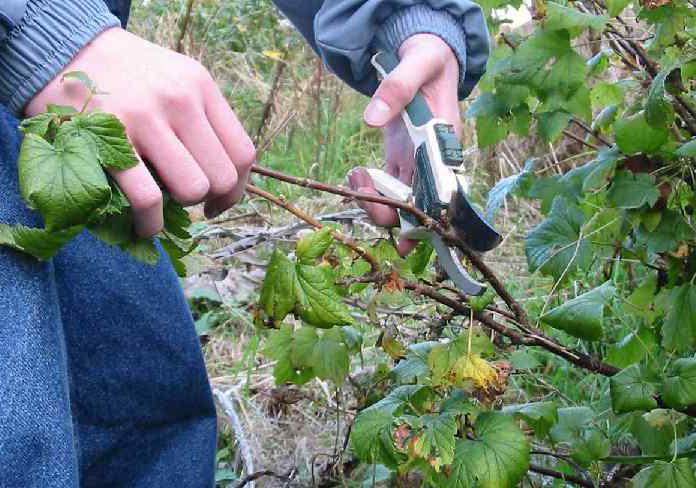
By the way! Detailed information about post-harvest pruning and fall you can get by reading this material.
Clearing (renewing) and loosening the trunk circle
Updating the trunk circle, namely removing the old mulch layer (including cleaning it from fallen leaves) is necessary in order to clean it from various wintering pests. This is followed by neat and shallow (so as not to hurt the roots) rip up the ground hoe or pitchfork at some distance from the bush (loosening will additionally protect the soil from freezing in winter), then form a new hole for easy watering and fertilization, and then mulch again.
Advice! All mulch and fallen leaves that you get from under the bush should be put in compost, or burned (especially if the bush is sick with something).
Watering and feeding
If it is rainy in the fall, then watering will no longer be needed, especially if you thoroughly mulch the bushes.
Advice! If autumn is dry, then be sure to spend water charging irrigationby wetting the earthen lump by 20-30 cm.
As you remember, you need to apply fertilizer on wet soil, so after watering it is advisable to feed the currants.
Important! If your fruiting and harvesting ends in the middle of summer (in the South of Russia), then you can still apply fertilizers with a sufficiently high nitrogen content. But already at the very end of summer or autumn, this is absolutely impossible to do, only phosphorus-potassium.
As a top dressing during this period, you can use:
- compost (pour 2-3 buckets directly into the trunk circle).
- mineral phosphorus-potassium fertilizers (superphosphate, potassium sulfate).
Note! In details about feeding currants after harvest and in autumn you can read in this article.
Treatment against pests and diseases
When the crop is harvested, it's time to process (spray over the bush and shed the near-stem circle) currants from diseases and pests.
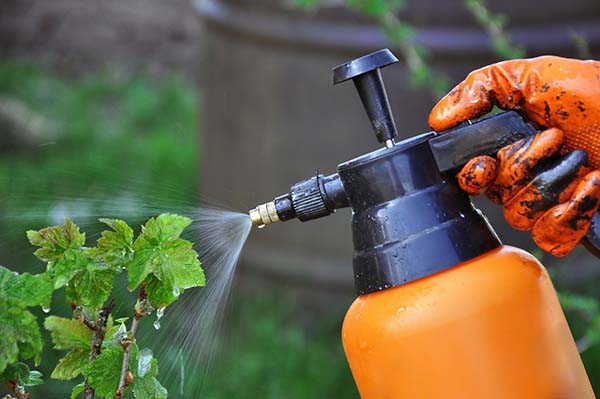
Worth knowing! The main work on the fight against diseases and pests, including aphidsshould generally be done in the spring.
You can use both chemical and biological agents to control pests and diseases of currants. This could be:
- Bordeaux liquid (1% solution) - as a rule, this is the most popular and cheapest remedy (one might say that it is popular), but not the most effective.
- Bitoxibacillin;
- Fitoverm;
- Fitosporin;
- Aktara;
- Alatar;
- Speed;
- Topaz.
Advice! Of course, for treating bushes, it is best to use systemic drugs (fungicides and insecticides), which penetrate the tissues of the plant and act gradually, throughout the bush, and even where the solution did not get. This is their difference from contact drugs, which work only with direct contact with the focus of the disease or a pest.
Video: caring for currants in the middle of summer (after harvest)
Note! Caring for white, red and black currants after harvest and in the fall during preparation for winter is mostly the same. Although it is believed that black currants need more watering than red and white.

Care for currants in the fall and preparation for winter
In general, caring for currants after harvest and in the fall during preparation for winter is one and the same list of activities that stretches depending on when its fruiting stops, which in turn depends on the climatic conditions of your region ( place of residence). However, for example, it is advised to transfer the formative and rejuvenating pruning of currants to autumn, even if fruiting has ended in summer (in July-August).
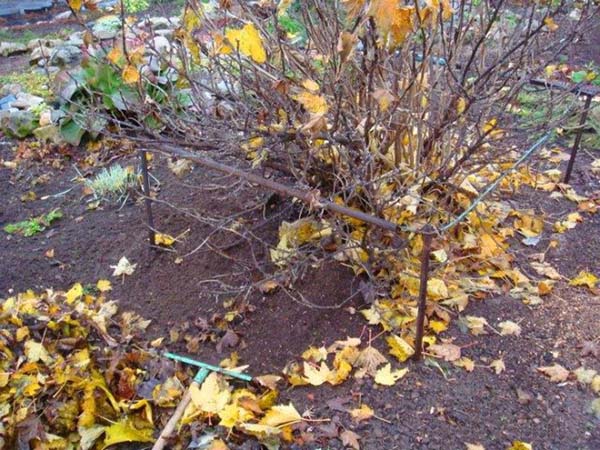
According to the standard, the measures for caring for currants in the fall and preparing them for winter include:
- shaping and rejuvenating pruning;
- mulching and shelter;
If not met in the second half of the summer(after trimming and before sheltering)then also join:
- cleaning the trunk circle and loosening it;
- watering and feeding;
- treatment against pests and diseases.
By the way! Autumn is about time transplant currants to a new place, although if absolutely necessary, this procedure can be performed either in the spring or at the very end of summer.
Video: caring for black currants in the fall: pruning, loosening, watering and feeding, mulching
Autumn shaping and rejuvenating currant pruning
Note! Autumn pruning of currants reviewed in detail in this article.
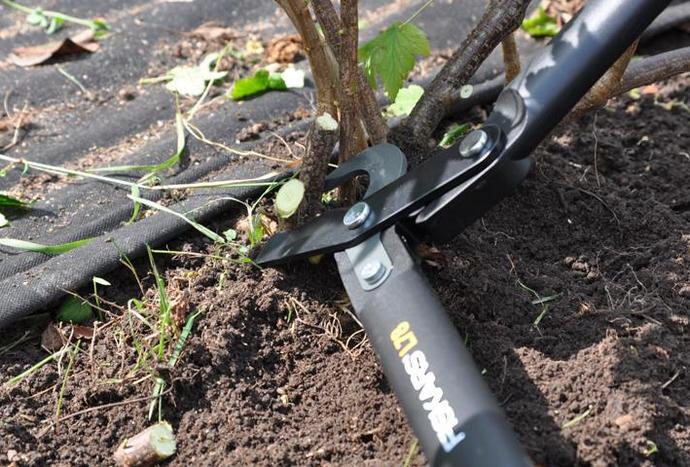
Video: pruning currants in autumn and spring
Mulching and shelter for the winter
After completing the basic measures to prepare for wintering, you should mulch the treated soil (up to 10 cm layer), if you have not done this earlier. As mulch, you can use all the same compost (at the same time fertilizer), leaves of ornamental shrubs or trees (only not fruit trees), rotten sawdust or hay, grass cut from the lawn (for example, left over after it autumn preparation for winter).
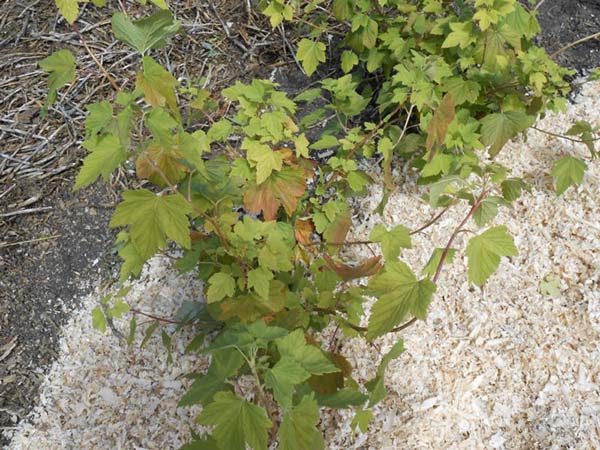
Important! You need to lay mulch only on a still warm soil. If you do this already on frozen ground, then the effect of such mulching will be negative, as a result, the bush will only slow down in development in the spring.
Mulching on dry sunny days will prevent the rapid loss of nutrient moisture, and at low temperatures, such a shelter for the winter will save plant roots from freezing, which are located close enough to the ground.
In general, currants are considered to be very frost-resistant cultural, they can withstand a drop in temperature to -25 ..- 30 degrees, so for the winter they are somehow not specially covered. But with a greater decrease in degrees, it is still recommended to cover for the winter, more precisely, it is to mulch, or use snow.
If you live in a private house (you can hardly get to the dacha if it already snows), then you can cover the currants for the winter with the snow itself. First by throwing it under the bush, and then filling it completely.
Video: preparing currant bushes for winter
Typical mistakes when caring for currants in the fall and preparing them for winter
All gardeners are prone to make mistakes.Even the most experienced gardeners sometimes make offensive mistakes when caring for currants after fruiting at the end of summer, as well as during autumn preparation for winter:
- Application of nitrogen-containing fertilizers in autumn - feeding with fresh manure in the autumn will provoke an increase in the growth of branches and green mass. This will negatively affect wintering, will not allow the plant to retire qualitatively. However, nitrogen fertilization is allowed in the second half of summer.if by this time you have already harvested.
- Breaking off branches with your hands... The trimming procedure is required to be carried out strictly with sharp instruments.
- Neglecting mulching shrub - because of this, moisture not only evaporates faster, without lingering in the near-trunk circle, but the shrub itself tolerates severe frosts worse.
Thus, currants, like all other fruit crops, require careful and proper care not only in spring, but also in autumn. Only then does it develop well and give an excellent harvest.
Video: preparing currants for winter

